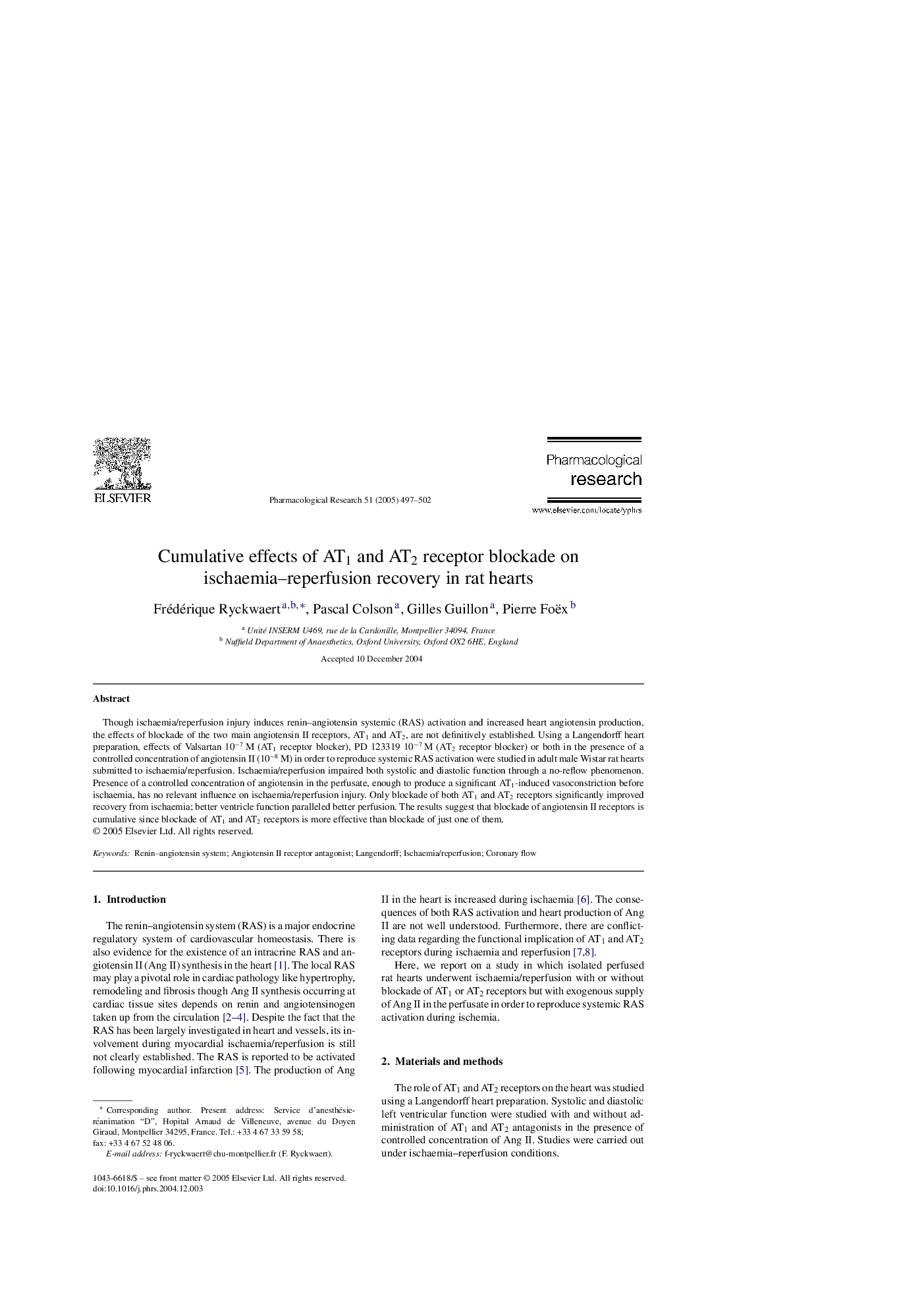| Article ID | Journal | Published Year | Pages | File Type |
|---|---|---|---|---|
| 9015009 | Pharmacological Research | 2005 | 6 Pages |
Abstract
Though ischaemia/reperfusion injury induces renin-angiotensin systemic (RAS) activation and increased heart angiotensin production, the effects of blockade of the two main angiotensin II receptors, AT1 and AT2, are not definitively established. Using a Langendorff heart preparation, effects of Valsartan 10â7Â M (AT1 receptor blocker), PD 123319 10â7Â M (AT2 receptor blocker) or both in the presence of a controlled concentration of angiotensin II (10â8Â M) in order to reproduce systemic RAS activation were studied in adult male Wistar rat hearts submitted to ischaemia/reperfusion. Ischaemia/reperfusion impaired both systolic and diastolic function through a no-reflow phenomenon. Presence of a controlled concentration of angiotensin in the perfusate, enough to produce a significant AT1-induced vasoconstriction before ischaemia, has no relevant influence on ischaemia/reperfusion injury. Only blockade of both AT1 and AT2 receptors significantly improved recovery from ischaemia; better ventricle function paralleled better perfusion. The results suggest that blockade of angiotensin II receptors is cumulative since blockade of AT1 and AT2 receptors is more effective than blockade of just one of them.
Keywords
Related Topics
Health Sciences
Pharmacology, Toxicology and Pharmaceutical Science
Pharmacology
Authors
Frédérique Ryckwaert, Pascal Colson, Gilles Guillon, Pierre Foëx,
